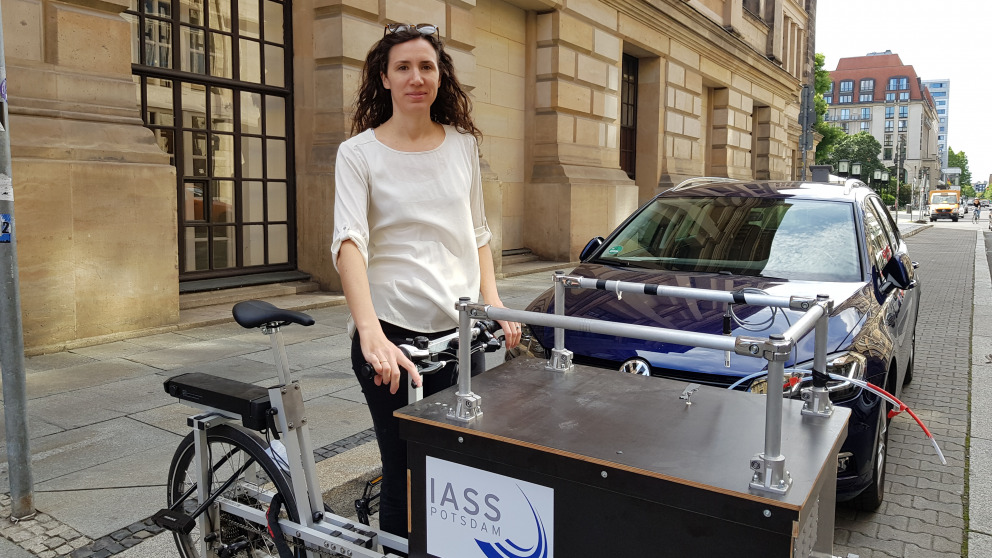Car-free Friedrichstraße: IASS Evaluates Impacts on Air Quality
25.08.2020
The Senate Department for the Environment, Transport and Climate Protection in Berlin will close Friedrichstrasse to vehicles for five months. A section of this major thoroughfare is to be transformed into a car-free zone from 29 August. Experts anticipate increases in pedestrian and bicycle traffic. Researchers will study how the closure affects air quality, with scientists from the IASS helping to measure and evaluate its impact on air pollution levels.

An air quality meter has been mounted on 172 Friedrichstraße for over 15 years. In order to observe the quality of air in the surrounding streets as well, an IASS research team led by atmospheric scientist Erika von Schneidemesser installed a number of additional meters on Glinkastrasse and Charlottenstrasse in early June. The meters will continue to operate for several months after the pilot project on Friedrichstrasse has ended. This will make it possible to compare pollution levels, taking into account typical seasonal trends, such as summertime peaks in ozone concentrations and a rise in nitrogen oxide emissions over the winter months.
Mobile unit monitors nitrogen oxide, ozone, and particulate levels
The IASS is also using mobile air quality meters, installed on a cargo bicycle, to measure the levels of nitrogen oxides, ozone, and particulates at different locations and at different times. The evaluation of this data should reveal whether any benefits for air quality resulting from the road closure are limited to Friedrichstrasse or extend to surrounding streets. “We began taking measurements several weeks ago and will continue for some time beyond the project’s conclusion. Such extensive monitoring leads to more robust findings,” explains Erika von Schneidemesser.
Transport Department to monitor noise pollution
The Senate Department for the Environment, Transport and Climate Protection also uses traffic counts to gauge noise pollution. This practice is to be continued in the wake of the pilot project, enabling researchers to get a better picture of the situation before, during and after the road closure. These insights will inform future decision-making around the options for a car-free Friedrichstrasse following the pilot project.
Video (in German):
Further information (currently only available in German):
Contact

Dr. Erika von Schneidemesser
